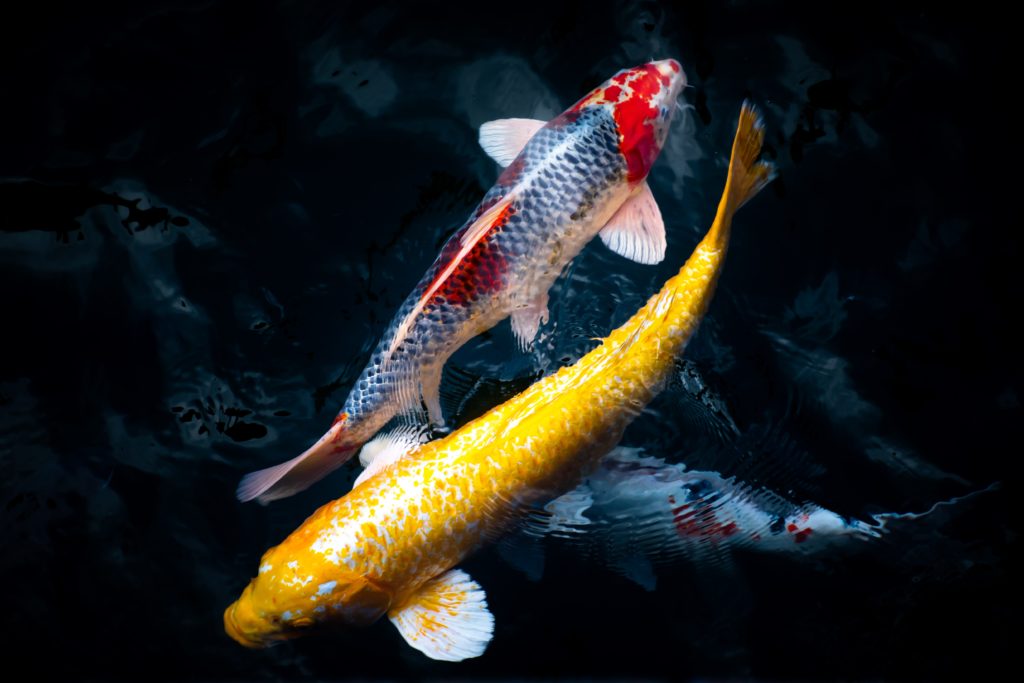Nowadays, it seems you can’t walk into your local coffee shop without bumping into:
- At least three hipsters sipping espresso wearing a newsboy cap and cravat as they type away on their latest screenplay.
- Two soccer moms with inverted bob haircuts wearing gaudy amethyst pendants who just got out of yoga/crossfit and definitely don’t need more caffeine.
- Someone with a dog/baby strapped to the front of their chest so they can double-fist the latest white-chocolate-pumpkin-cinnamon-macchiato-monstrosity.
The one thing they all have in common? They rave about how much they love mindfulness.
- They read this book.
- They went to a 30-day silent retreat.
- They went on a spiritual journey through the Tibetan countryside where they learned at the illustrious feet of some sage no one’s heard of.
- They watched a TEDTalk about it.
Yeah yeah, more hippie bullshit, you say to yourself. Some “mindfulness” to go along with your crystals that keep the bad joo-joo away and essential oils that cure every ailment that continues to mystify modern medicine.
Looks like bullshit. Smells like bullshit. But what if it isn’t bullshit?
What does the research say?
Let’s take another sniff. Here’s a practical guide to mindfulness–for skeptics.
•••
The Evidence
Most of the current apprehension in the scientific community about mindfulness revolves around a lack of consistency when it comes to the definition and practice of mindfulness in empirical research. Meaning there’s probably a difference between a 60-second mindfulness meditation app versus a 2-hour guided mindfulness meditation lead by a trained instructor, but if they’re both called “mindfulness,” a lot of variability creeps into the results.
So for the purposes of this article, we’ll use the definition the APA (American Psychological Association) uses: “A moment-to-moment awareness of one’s experience without judgment.”
The APA goes on to caution that “…mindfulness is a state and not a trait. While it might be promoted by certain practices or activities, such as meditation, it is not equivalent to or synonymous with them.” Basically, what this means is that mindfulness is a piece included in many types of meditation, but you can take that piece and use it as a stand-alone practice. Most secular practices separate mindfulness from meditation to avoid treading on people’s spiritual beliefs. Mindfulness itself doesn’t have any spiritual or religious doctrine attached to it—it’s just a practice to help shift your attention from the past or future into the present moment.
But what do some of the “Big Names” out there say about the evidence for practicing mindfulness? Here are a few easy-to-find articles (down with paywalls to scholarly research!) with references if you want to get nitty-gritty about the evidence:
Harvard
According to this article, the number of randomized controlled trials involving mindfulness has jumped from one between 1995-1997 to over 200 from 2013-2015. Despite the limitations of some studies having small sample sizes or flawed experimental designs, the article argues several “well-designed, well-run studies have shown benefits for patients engaging in a mindfulness meditation program, with effects similar to other existing treatments” for issues like depression, chronic pain, and anxiety.
UC Berkley
This article published by the Greater Good Science Center at UC Berkley reported that researchers have found practicing mindfulness can improve attention span and reduce mind-wandering. Researchers have also found that practicing mindfulness can increase the connections between the amygdala and prefrontal cortex, which helps us to be less reactive to stressors and recovery better when we do experience stress. Other studies mentioned in the article found evidence that practicing mindfulness can reduce implicit bias toward minorities and reduces our natural tendency to focus on negative aspects of life.
Cleveland Clinic
This article reviewing evidence for practicing mindfulness found people can gain benefits to brain and immune health with as few as 10-15 minutes of practice a day. The most substantial benefits, according to the article, include enhanced emotional health and reduced stress, decreased chronic pain symptoms and functional pain-related limitations, and improved sleep. The article also discusses how practicing mindfulness affects various neural pathways and psychological functioning, which results in improved self-regulation abilities.
Psychology Today
Practicing mindfulness triggers what Dr. Herbert Benson calls the body’s “Relaxation Response,” which is the opposite of the fight-or-flight response.
When we experience a stressor, our body’s sympathetic nervous system engages, aka, our fight-or-flight response. When we’re in this mode, our system priorities survival over comfort—our blood rushes away from our digestive system and into our extremities so we can fight or run from a threat, our pupils dilate, our breathing becomes rapid, our heartrate increases to pump more blood, and our body tries to get rid of excess weight. This is why when you get nervous your stomach hurts and you have to pee.
By practicing mindfulness, we can trigger the Relaxation Response, which allows our body to engage the parasympathetic nervous system, aka, our rest-and-digest response. In this mode, our body relaxes and sends blood back to help with digestion, our breathing and heartrate slow, and our muscle tension eases up.
Our systems aren’t built to sustain chronic stress. So learning ways to reduce this stress logically leads to better health and wellbeing.
American Psychological Association
This free training by the APA has a cornucopia of references if you revel in a good academic citation. For those not in the mood to scour the literature, I’ll hit the high points.
Practicing mindfulness contributes to effective emotion-regulation by promoting metacognitive awareness (observing your thoughts), decreasing rumination and perseveration (thinking about the same thing over and over), and improving attention span.
In several studies, people who practiced mindfulness were better able to disengage from emotionally upsetting stimuli, focus attention and suppress distracting information, had less anxiety, had less depression, and had less somatic distress compared to control groups.
•••
How Does Mindfulness Work?
Basically, mindfulness works by helping you shift your attention from the past (where depression tends to live) or the future (where anxiety tends to live) and bring it to the present moment (where peace lives). It teaches you to be more aware of your thoughts, your emotions, your motivations, and your behaviors.
When something happens that pisses us off, we ruminate about it—thinking about it over and over again and making judgments about how unfair life has been to us. Practicing mindfulness shifts our attention away from this bullshit and back to the present moment.
When we get anxious, we start catastrophizing—thinking about the worst-case scenario. “What if X happens?” You might get fired, the plane might crash, you might forget to pack enough clothes, an asteroid might hit your house—but constantly worrying does nothing to help. Practicing mindfulness helps you catch yourself when you start catastrophizing and helps you calm the raging waters of your mind. When the waters are calm, you can think clearly.
“Pain is inevitable; suffering is optional,” is an old Buddhist saying that accurately describes the psychology of pain. When we experience pain, especially chronic pain, our internal self-talk and beliefs about it drive our emotional reactions—our suffering results from our psychological responses to pain.
The more we worry about our pain getting worse, the more space our pain takes up in our mind’s eye—our perception and attention—and the worse it becomes. By worrying about our pain, we trap ourselves in a mental prison, adding suffering on top of pain.
Viktor Frankl, in his book Man’s Search for Meaning says “Between stimulus and response there is a space. In that space is our power to choose our response. In our response lies our growth and our freedom.” Mindfulness is one way to create this space.
When we ruminate about all our past failures and mistakes or start spiraling into self-deprecation, depression crops up. Mindfulness helps us catch when our internal monologue turns toxic and practicing nonjudgment toward ourselves acts as a salve to soothe old wounds we’ve carried around for years.
•••
Practical Considerations
Despite the benefits of practicing mindfulness, most of us don’t have the luxury of meditating for hours each day—which is what most people think of when they hear the term mindfulness. Unless you’re a monk, this isn’t really how you practice. The trap most people get stuck in is the all-or-nothing idea of If I can’t meditate for an hour each day, I might as well not do it at all.
If you only have 5 minutes in the morning between brushing your teeth and waking up the kids for school, then practice mindfulness for 5 minutes. It doesn’t seem like much, but a little goes a long way; and small consistent habits lead to big changes down the road.
You don’t need to sit on a fancy poof, wear weird pants, sit in the lotus position, or chant om to practice mindfulness.
Mindfulness, at its core, is designed to be practical. Meaning you’ll likely be practicing it amid distractions—on the subway, at your work desk, or before a test or job interview. Don’t expect silent seclusion because that’s a rarity in the real world.
So now we know what mindfulness doesn’t have to look like. But what can it look like?
•••
Mindfulness In Action
Like starting any new habit, the simplest place to start is by making the new behavior adjacent to what you already do on a consistent basis.
Doing the dishes
I first came across this exercise years ago in The Miracle of Mindfulness by Thich Nhat Hanh. When you hand wash your dishes, where is your attention? Is it on your to-do list? What you’re going to eat later? Something that happened last week that you’re still irritated about? Some impending doom on the horizon you’re catastrophizing about? Or is your attention in the present moment, where there isn’t room for all the bullshit that stresses you out? Regain control of your thoughts by focusing on your senses:
- The temperature of the water running over your hands.
- The smell of the soap.
- The way the light reflects off the bubbles or how the water glistens on the plate as you wash it.
- The sound of dishes clanking together or the water sloshing back and forth.
- Your posture—are your shoulders back and your back straight, or are you hunched over?
- The pressure of you feet pressing into the floor.
If each dish was a priceless heirloom, how much care and attention would you give to each one as you washed and dried it? This is mindfulness—being completely in the present moment.
Eating and drinking
How long does it take you to eat? How many times have you been eating while talking to someone or watching tv, only to look down and realize you’ve already finished your food? That’s called mindless eating. This is how most people eat. We scarf down whatever’s on our plate as we talk to people, watch tv, play on our phone, or pay attention to anything except what we’re eating. We throw a hunk of bread in our mouth, chomp our teeth against it a few times, then guzzle some sugary drink to wash it down our gullet without taking any real enjoyment out of the experience. Mindful eating is when you pay attention to:
- Texture. Is your food crunchy, soft, mushy, grainy, or gummy? When you take a drink, is it fizzy, heavy, light, thick, or thin?
- Temperature. Is it hot, cold, room temperature, or freezing?
- Flavor. Is it salty, bitter, sweet, buttery, fatty, sour, spicy, a mix, or is it something more exotic?
- How does it feel traveling toward your stomach?
- Pro Tip: The next time you’re cold, take a good swig of coffee or hot chocolate and focus on the feeling of the warmth traveling down your throat into your stomach. Take comfort in this cozy feeling.
Walking
The next time you walk anywhere—the bathroom, your office floor, down the stairs—you can get in some mindfulness practice. A few ideas for what to focus on:
- The way your feet strike as you walk—heel first or ball first? Are you walking heavily or stomping, or are you walking lightly?
- Your speed—how fast or slow are you walking?
- Your gait—do your feet point inward or outward as you walk?
- You posture—are you leaning too far forward? Do you look up as you walk or stare at the ground? Is it harder to breathe because your shoulders are slouched? Try bringing your shoulders back and straightening your back to see how this improves your breathing.
- Do you swing your arms or keep them by your sides?
Breathing
Breathing is something everyone has to do to stay alive, which makes it the perfect behavior to tack on some mindfulness practice. Mindful breathing is also my go-to way to calm down.
- Inhale through your nose and take a big deep belly breath—focus on how the air moves, traveling from your nose, then filling up your lungs and belly
- Hold it a few seconds—focus on how full your belly feels from air
- Breathe out through your mouth—focus on the way your breath sounds and feels as you exhale
You can also imagine a small fire in your belly. Focus on keeping the fire alive, then try to grow it. Every inhale feeds the fire. Focus on the fire flickering, expanding, contracting. What color is your flame? How bright is it? Does it get brighter when you inhale? Does it flicker when you exhale? As you continue to breathe, watch as the fire expands and travels through your arms and legs until it reaches your fingertips and toes, warming and calming you.
There are countless ways to add in a bit of mindfulness to your day to day. Find some that work for you and practice each day—even if it’s just for 5 minutes, focusing on the coziness of putting on a shirt fresh out of the dryer, or the first sip of fresh coffee in the morning. Just work it in and don’t think too hard about it. It’s called practice for a reason—don’t expect perfection; improve a bit each time.
•••
Moral Of The Story
If you’re still skeptical, that’s cool. The scientific community is slow to validate practices that have anecdotally proven effective throughout history. But empirical support for mindfulness continues to grow.
But ask yourself, what have you really got to lose by trying it out? You don’t have to buy anything to practice mindfulness; there are tons of free resources on the internet. If you try it and don’t find any benefit from it, then you’ve lost 5 minutes out of your day.
Is mindfulness a cure-all? No. Is it perfect for everyone? Probably not. But it shows promise to help you regain control of your thoughts and your attention, so you can stop dwelling on things that cause you distress and find more peace and clarity in the present moment.
Give it a try and see what happens. Let us know how it goes! Tag us on social media and share your experiences. The only place and time to practice mindfulness is here and now. Don’t wait for silence or solitude—they may never come. Better to practice in chaos now than wait for perfection later.



